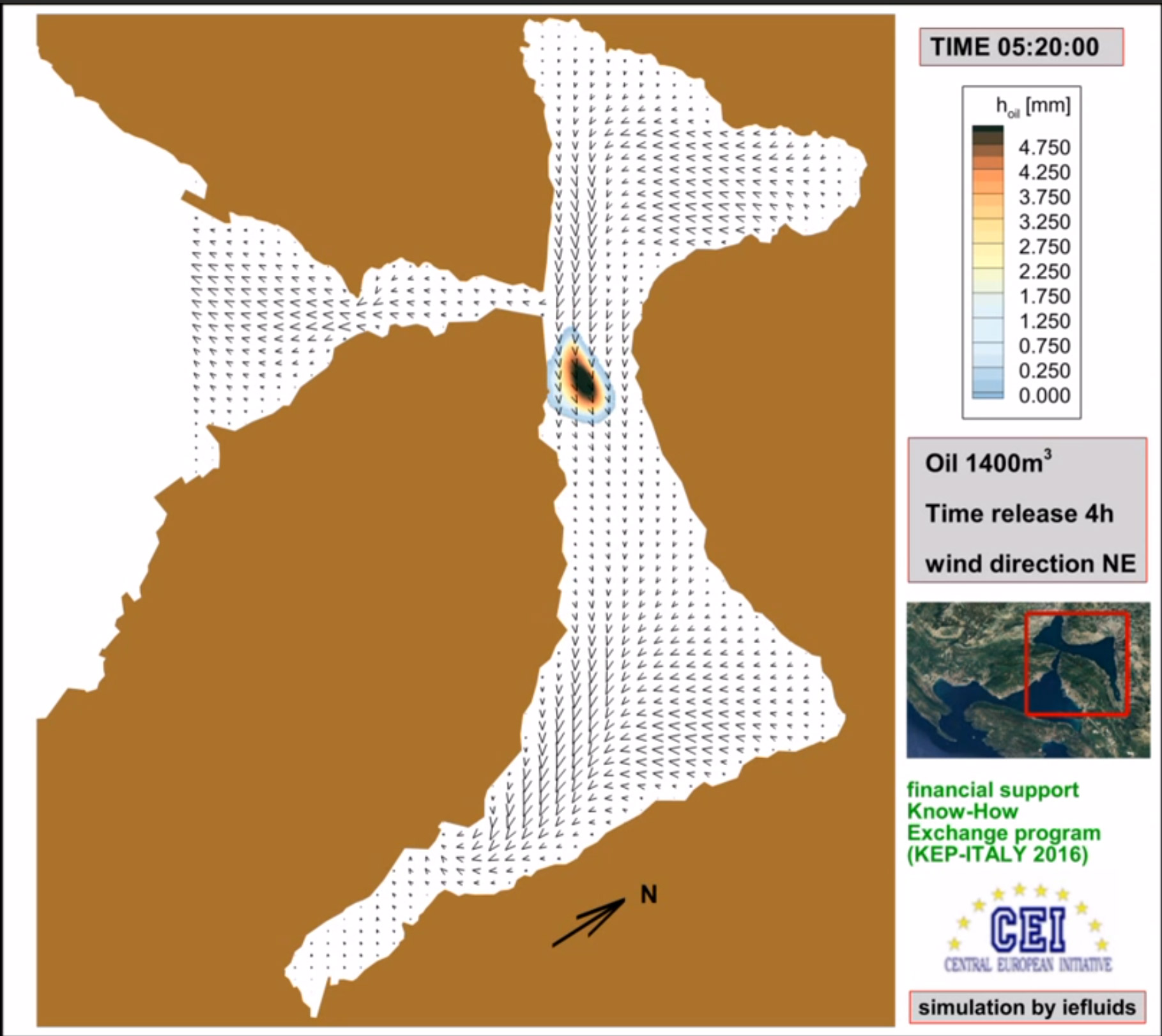Near-real time oil spill simulations for emergency response in coastal regions
Ocean Sciences, Modeling
Research area
Available data from 1977 to 2003 report about 304,700 tons of oil released in the Mediterranean Sea, mainly due to accidents caused by marine traffic of oil tankers and ships.
Oil spills impact on marine and coastal environments, on both biological species and human health, and finally to the related economic activities.
As soon as the oil is released in the sea weathering processes take place, changing oil physical and chemical properties in time, strongly affecting oil fate and persistence at sea. Given such consequences, it is mandatory to mitigate the hazard by means of contingency plans for a fast response. Numerical simulation can guide and optimize clean-up operations.
Project goals
There are two main oil spill models available in literature:
- based on a lagrangian approach. i.e. the oil is represented by a collection of particles;
- based on the eulerian approach, in which the oil is represented by a thin liquid film floating on the sea surface.
Each approach has its own pros and conts. Usually the model choice depends on the kind of the oil to be simulated and the length and time scales of the spill involved. In any case, to be used in a real application some information should be integrated in the model. The satellite images can detect the initial instant of the oil spill and from the image is possible to give initial condition to the oil spill model, i.e. LTRANS lagrangian solver. The oil is then transported and diffused by sea currents provided by the forecast output of mitGcm model of the region of interest.
Computational approach
the urgent computing in the case of oil spill simulation poses mainly three technological challenges: the first, a cloud computing issue, regards the automatic integration of both the data from the large scale model required as inputs for the oil spill model, plus the assimilation of the spill satellite image as initial condition for the run; the second, an HPC issue, regards the computational time required to provide a forecast of the oil spill trajectory in near-real-time, in order to permit a fast response;
The first issue needs access to different large databases stored in the cloud: the simulation tool should be active as a background process and periodically queries the satellite images and detect the oil spill. In case of spill detection the simulation should start: the initial condition must be computed and the data (mitGcm outputs) downloaded. Access to a large amount of computation power, on demand, i.e. highest priority on job queues, can solve the HPC issue. This brute force approach can be relaxed if the code can be optimized, or if the code can be ported on GPU and the overall execution can be accelerated.
Oil spill simuation in Kotor Bay, forcing from wind from LES simulation of the low-atmosphere and sea current frome aLES simulation of the sea basins.
From a work I done in the framework of KEP-Italy exchange program 2016
Andrea Petronio
Istituto Nazionale di Oceanografia e di Geofisica Sperimentale
I have a master degree in electric engineering and a PhD in computational fluid mechanics. I have 10+ years of experience in both environmental and industrial numerical simulations. I'm an expert user of OpenFoam cfd open source tool, for which I developed some models myself. I worked on academic in-house codes (fortran), as well as on proprietary software products in C++ and python. My experience in environmental flow regards the high resolution simulations of
- low-atmosphere flows at neighbor scale with LES methodology for the turbulence closure, considering stratification effects, and pollutants dispersion;
- marine coastal flows, with oil spill modelling (with eulerian and lagrangian approaches);
- modelling of the underwater acoustic noise propagation.
For industrial applications I mention the optimization of aerodynamic shape, the quantification of performance of marine propellers, evaporation and condensation of humid air, multiphase simulation of steel quenching process










